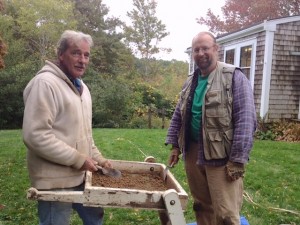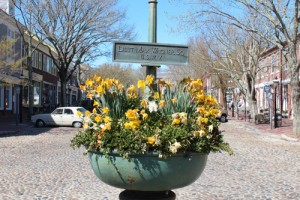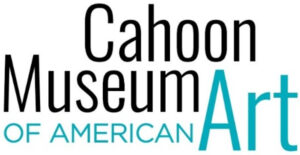
David Wheelock, left, and Craig Chalfin are unearthing finds at Green Briar Nature Center.
By NANCY RUBIN STUART
To the untutored eye a piece of wood is just a piece of wood. But not to structural archaeologists Craig Chalfin and David Wheelock who dug test pits last month at the former Ida Putnam home, which serves as the Jam Kitchen of the Green Briar Nature Center in Sandwich.
Suspicions that the 1880 home may be even older than its official date was the result of a structural survey Chalfin and Wheelock conducted at the Putnam home last winter. “We noticed timbers that looked much older than the mid-19th century,” Chalfin explained. “That led us to go upstairs to the attic where we found other architectural details that looked like those of the 17th century.”
One possible theory explaining the discrepancy was that an earlier house stood on the property whose wood thrifty Cape Codders recycled into the later home.
“That’s not uncommon around here,” Wheelock explained. “We’ve seen this happen with several buildings in Sandwich. Sometimes they’ve been added onto and old timbers are used to complete the new part. Of course archaeology is not an exact science, especially when it comes to structures. But sometimes, we get lucky and find signs of earlier homes that help us figure out how old a building really is.”
Among those signs may be corner posts that once supported a house foundation like the one Wheelock discovered in the ground near the 17th century Wing Fort House, which is also in Sandwich, proving an earlier house once stood in front of it.
Another hint may be what archaeologists term “material culture” — objects like old buttons, pottery remnants, pipe stems or coins dropped, forgotten or discarded outside a house.
Just before the archaeologists began their tests, John Richmond, Green Briar’s Jam Shop retail sales manager, read an 1898 newspaper account from the archives at Sandwich Library. To his surprise, the article announced the Ida Putnam House had been moved up the hill to dry ground from its original site.
“That’s significant, “ explained Wheelock. “The article suggests the land just below the Putnam House was once marshy even though today it’s filled in. It’s those little tidbits of information that get our attention. This suggests there may have been an earlier building on what is now the Putnam house site.”
That led Chalfin and Wheelock to dig test pits for signs of material culture just outside the Putnam house. So far, they have unearthed several Native American artifacts near the front door. These, Chalfin explained recently as he carefully labeled and placed them in a plastic bag, were carved pieces of rhyolite which the natives used as implements and tools.
When asked their age, the archaeologist looked up and smiled. “Who knows? They could be 600 years old or 6,000 years old. They’ll have to be tested before we know. “
“And that,” he added, “is what makes archaeology such exciting work. Sometimes I come across an object that has been buried for hundreds, perhaps thousands of years and I’m the first person to see it. What could be more thrilling than that? ”























